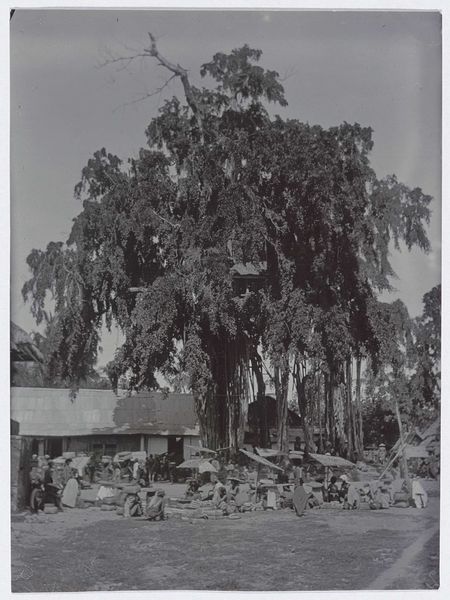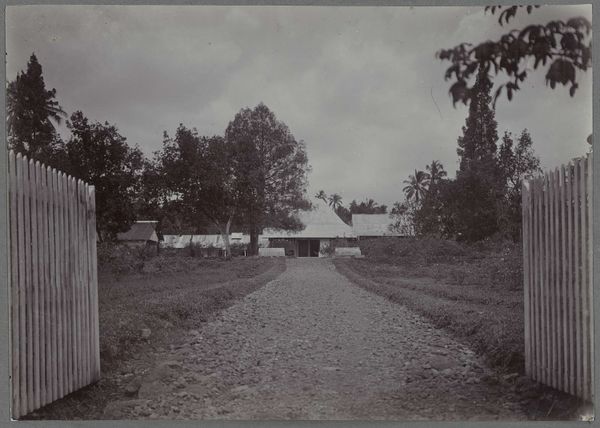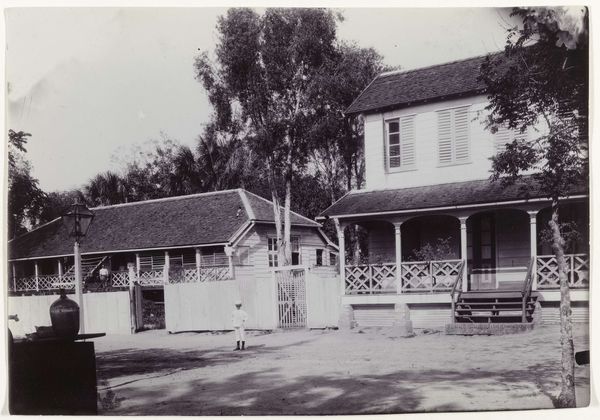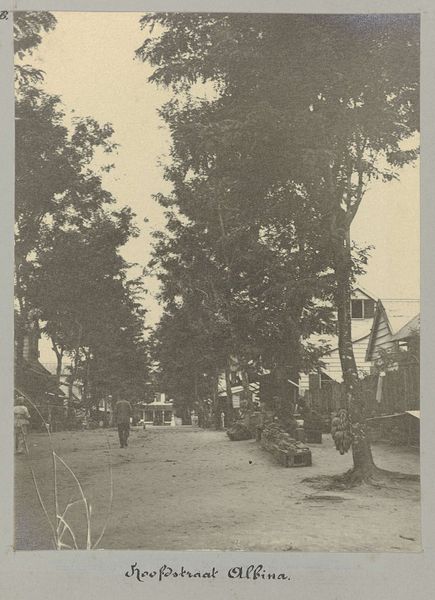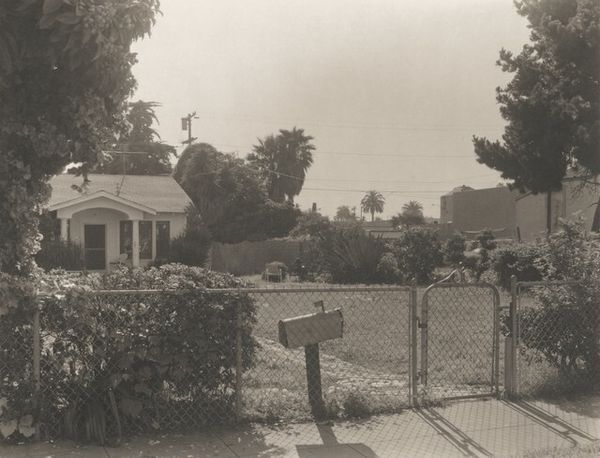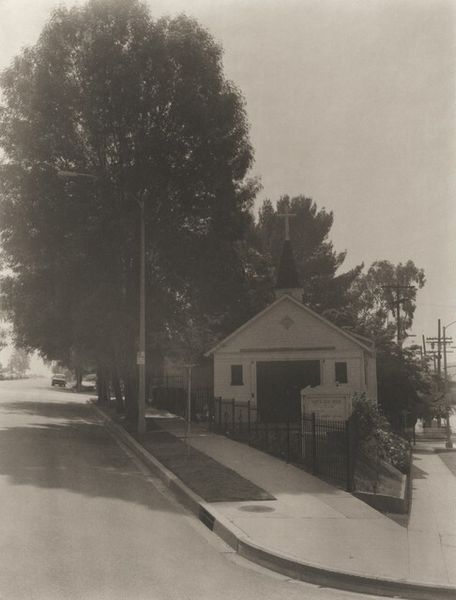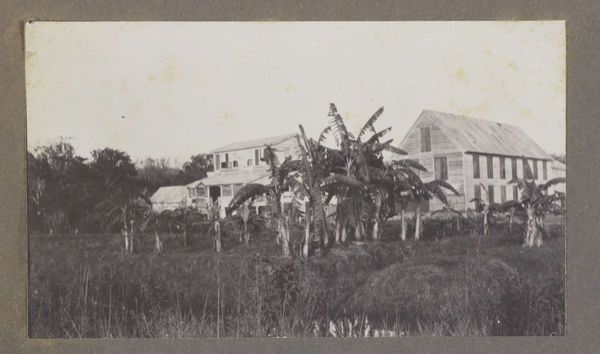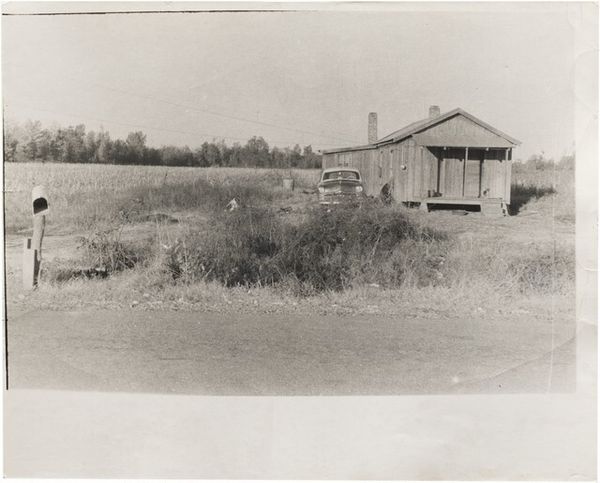
Victoria Avenue/McLaughlin Avenue, Mar Vista Possibly 1995 - 1996
0:00
0:00
photography
#
landscape
#
outdoor photograph
#
street-photography
#
photography
#
monochrome photography
#
monochrome
#
monochrome
Dimensions: image: 34.1 × 26 cm (13 7/16 × 10 1/4 in.) sheet: 42.5 × 35.2 cm (16 3/4 × 13 7/8 in.)
Copyright: National Gallery of Art: CC0 1.0
Curator: Madoka Takagi's photograph, possibly from 1995 or 1996, captures a scene at Victoria Avenue and McLaughlin Avenue in Mar Vista. The work is primarily in monochrome. What’s your initial response to it? Editor: The tonality gives it a certain gravitas. There’s a stillness, almost melancholic quality that seeps from the composition; it’s muted. I find myself looking for specific material references to that period, such as the car model or architectural features. Curator: Exactly, the monochromatic palette really directs the eye. Consider how the contrasting textures, such as the rough foliage versus the smoother facade of the building, impact the formal relationships within the frame. Note that the composition is carefully structured with the darker trees serving as natural frames on either side. Editor: Right. The labor involved in printing would mean thinking about the contrast, considering the value of certain blacks or whites on the paper and understanding that this shot likely involves pre-visualization on Takagi's part. Also, thinking of the car and house in terms of their place as materials in an economic exchange is something to consider here. Curator: True, we should consider the relationship of the architectural setting, or landscape in question and how that defines our reading. The visual impact seems connected to her aesthetic choice. Editor: I suppose what draws me is thinking about how things such as asphalt production and material labor get abstracted in our experiences. This sort of image allows for a contemplation of our present world-making activities and routines. Curator: So, by examining the visual components—the shades, the structured arrangements—we discern not just the subject, but Takagi’s intention in shaping the photo’s overall design. It offers insight into the scene as interpreted and rendered, correct? Editor: Certainly. From a materialist point of view, it makes you want to pick up some historical surveys or research how certain developments changed street planning in the Los Angeles area at this time. What remains, then, is this ghostly document in grayscale tones. Curator: The interplay of visual texture and composition creates an engaging perspective of an urban landscape and the subtle, quiet interactions that might characterize a fleeting experience. Editor: And thinking of that landscape as having roots in socio-economic activity adds a whole other layer to this photographic interpretation.
Comments
No comments
Be the first to comment and join the conversation on the ultimate creative platform.
